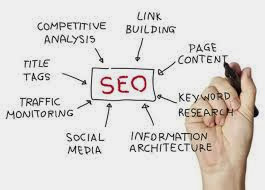Who knew writing a few articles and giving them away for free could be one of the best things you could do for your own web site? This is the precept behind article marketing, and comprises the ultimate in “white hat” or honest and straightforward marketing techniques. With article marketing you provide what other web sites need, you give a reason for the search engines to send traffic your way, and most of all you give readers the information they seek. This chapter will briefly outline how article marketing works and what it can do for your web site.
There are two primary factors affecting your place on the search engine results pages, how relevant your page seems to a particular search and the number of quality links coming to your page from other sites. It is obvious a search engine wouldn’t stay in business long if someone searched for “roses” and was led to a page about “muscle cars”, so the more clearly your page can position itself as relative to a particular search term the better. Incoming links to your web page are seen by search engines as popularity votes, so the more you have from related sites the better.
But the key to both of these factors is found in the word “relevant”. Posting an article on your web site that is optimized for relevance to a particular search term will go a long way in convincing the search engines to include you in the search results for that term. Submitting articles to related web sites with a link back to your own makes you appear popular with the right crowd, the “in” crowd of relevant web sites. Did you notice both of these activities involved the use of articles?
Article marketing is the practice of providing articles you’ve written (or had written on your behalf) to other web sites, blogs and ezines. These articles are provided for free, and in return you are allowed to insert a short bio and a link back to your web site. This bio is usually at the end of the article. Now if that link back to your web site leads to great content that is related to the article, you’ve just managed to kill two birds with one stone; you’ve shown your site is relevant and you’ve made a link to it from a related site so you’ve created the impression your site is popular within that niche.
You are on your way to being recommended by the major search engines and because of that, building traffic.
Article marketing truly creates a win-win situation for everyone involved and if you want to get your share, here are some of the top article directories you will submit your articles to get free traffic and backlinks to your website:
http://www.ezinearticles.com
http://www.goarticles.com
http://www.articlecity.com
http://www.searchwarp.com
http://www.articledashboard.com
There are two primary factors affecting your place on the search engine results pages, how relevant your page seems to a particular search and the number of quality links coming to your page from other sites. It is obvious a search engine wouldn’t stay in business long if someone searched for “roses” and was led to a page about “muscle cars”, so the more clearly your page can position itself as relative to a particular search term the better. Incoming links to your web page are seen by search engines as popularity votes, so the more you have from related sites the better.
But the key to both of these factors is found in the word “relevant”. Posting an article on your web site that is optimized for relevance to a particular search term will go a long way in convincing the search engines to include you in the search results for that term. Submitting articles to related web sites with a link back to your own makes you appear popular with the right crowd, the “in” crowd of relevant web sites. Did you notice both of these activities involved the use of articles?
Article marketing is the practice of providing articles you’ve written (or had written on your behalf) to other web sites, blogs and ezines. These articles are provided for free, and in return you are allowed to insert a short bio and a link back to your web site. This bio is usually at the end of the article. Now if that link back to your web site leads to great content that is related to the article, you’ve just managed to kill two birds with one stone; you’ve shown your site is relevant and you’ve made a link to it from a related site so you’ve created the impression your site is popular within that niche.
You are on your way to being recommended by the major search engines and because of that, building traffic.
Article marketing truly creates a win-win situation for everyone involved and if you want to get your share, here are some of the top article directories you will submit your articles to get free traffic and backlinks to your website:
http://www.ezinearticles.com
http://www.goarticles.com
http://www.articlecity.com
http://www.searchwarp.com
http://www.articledashboard.com
To Know More About Money Making Blog
1- How To Start A Blog That Matters.
2- Blogging With John Chow.
3- Auto Blog Samurai Software Suite.
1- How To Start A Blog That Matters.
2- Blogging With John Chow.
3- Auto Blog Samurai Software Suite.















